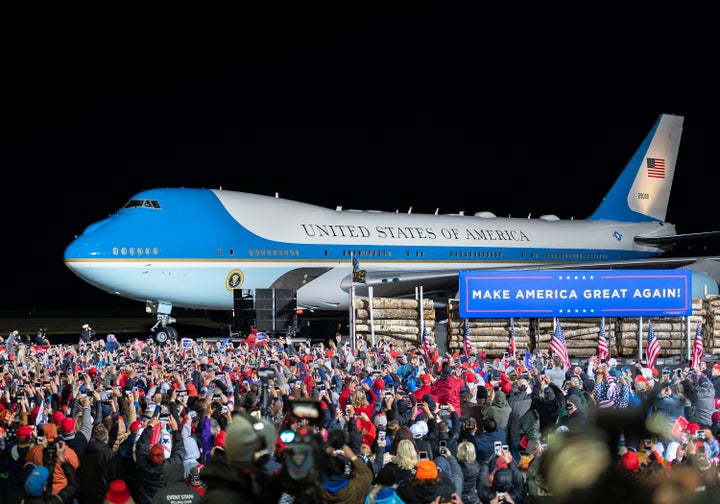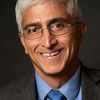WASHINGTON — For months, President Donald Trump seeded and nurtured a culture of coronavirus denial. Early Friday, the coronavirus proved his strategy does not work.
From calling the whole thing a hoax to claiming it would go away in the warm weather to dismissing it as milder than the flu to discouraging mask use among his staff to mocking Democratic challenger Joe Biden for wearing one, Trump has made downplaying the disease a cornerstone of his reelection effort.
Trump even pushed ahead with a campaign fundraiser at his New Jersey golf resort Thursday, despite knowing that a top aide with whom he spent many hours in recent days had just tested positive — a direct violation of CDC protocols that potentially infected dozens of high-dollar Republican donors.
It was only after midnight Friday, after 7 million Americans had already contracted the disease and some 208,000 had died, did Trump make the announcement that could finally force a course correction: “Tonight, @FLOTUS and I tested positive for COVID-19. We will begin our quarantine and recovery process immediately. We will get through this TOGETHER!” Trump wrote in a 12:54 a.m. Twitter post.

Whether the announcement, coupled with the cancellation of multiple fundraisers and rallies the president had planned in the coming days, forces long-term changes in Trump’s and his staff’s behavior is unclear.
White House staff on Friday were wearing masks indoors, a change from the general practice since the start of the pandemic.
Many workplaces where employees still must come to an office had long ago adapted by requiring them to wear face masks. Not so at the White House, where staff for the most part did not wear them, even as they interacted closely with one another.
Their justification had been the daily coronavirus tests that anyone who may be in the same room as Trump must undergo — a rationale that from the outset has ignored the window of hours or days in which a person could be contagious but not yet have enough of a viral load to be detected by a test.
This mindset has endangered not just staff who want to work for him, but also those who are not political loyalists, such as career staff who work in the building and Secret Service agents — many of whom have fallen ill — who guard him day and night. Trump even tried to push his anti-mask bias on journalists. During a Rose Garden news conference this spring, White House staff moved chairs that had been set up six feet apart so that they were closer to each other because of Trump’s dislike of social distancing.
And when Trump traveled, that anti-mask culture has traveled with him.
Secret Service agents and staff who travel aboard Air Force 1 as a rule have not worn masks. At Joint Base Andrews, where most personnel have been wearing masks as a matter of course to help slow the spread of the virus, those involved with the ceremony of welcoming Trump during his transfer from the Marine 1 helicopter to the airplane conspicuously have not.
Chief of staff Mark Meadows, during his frequent visits to the press in the aft section of the plane, has not been wearing a mask. He has explained that he is tested regularly and therefore does not need to. On Wednesday’s flight from Minnesota’s rally back to Andrews, on which Hope Hicks, the aide who tested positive the next morning was also flying, Meadows visited the traveling pool for some 15 minutes, maskless, and indeed physically touched one reporter at one point.
That attitude comes from the top, as Trump made clear during a visit he made to the press section on a recent trip to greet a reporter he is fond of. After saying hello, he frowned and said to him: “You look better without the mask.”
Trump’s cavalier attitude toward the disease came despite being at high risk for suffering potentially deadly symptoms because of at least two comorbidities.
Trump is 74 years old, and the elderly are far more prone to serious consequences from the illness than younger people. His weight also likely increases his risk. Trump is borderline obese for his height, according to his most recent physical, and one former White House aide has suggested that the president’s true weight is considerably higher than advertised.
Trump has occasionally expressed awareness of his vulnerability. “I’m on a stage and it’s very far away,” Trump told the Las Vegas Journal-Review after violating Nevada rules by staging an indoor rally last month. “And so I’m not at all concerned.”
Trump had been asked about the wisdom of holding an event indoors and the potential risk to rallygoers, but Trump only addressed the health risk to himself. That defiance was also evident at a rally the campaign staged in Tulsa in June, which it claimed would attract as many as 100,000. In the end, only 6,200 showed up — including former GOP presidential candidate Herman Cain, who wound up dying after he was diagnosed with COVID-19 not long afterward.
Neither the Trump campaign nor the White House responded to HuffPost queries about changes in protocols. The campaign did put out a statement that all in-person events by Trump were canceled or postponed for the time being.
Meanwhile, though, Meadows was back out at the White House, briefing reporters on the president’s condition on a North Lawn driveway. Asked why he wasn’t wearing a mask, Meadows had a familiar response: “So I’ve obviously been tested, we’re hopefully more than six feet away,” he said.

